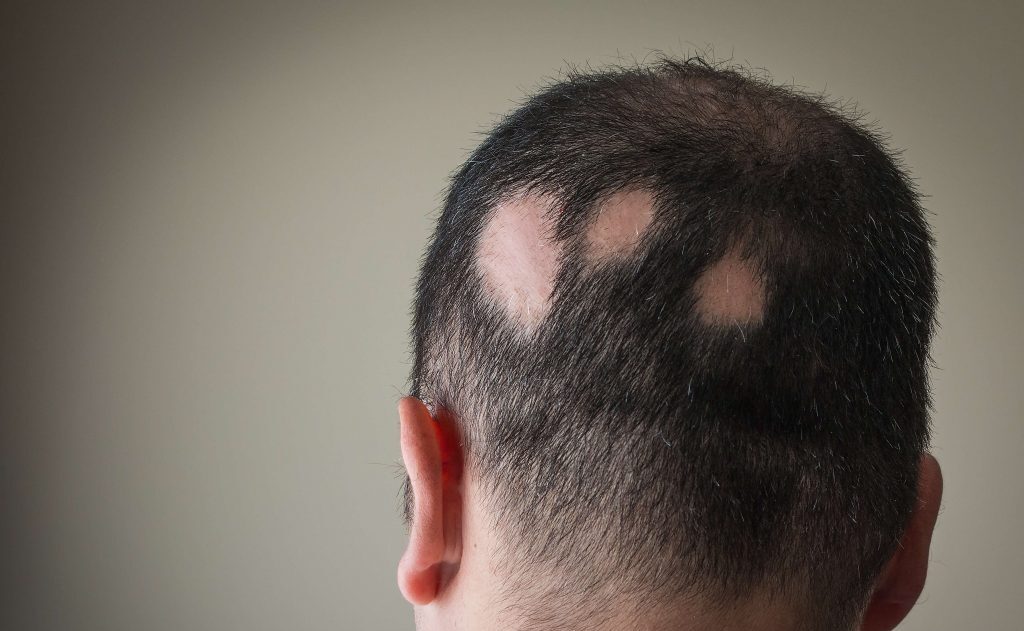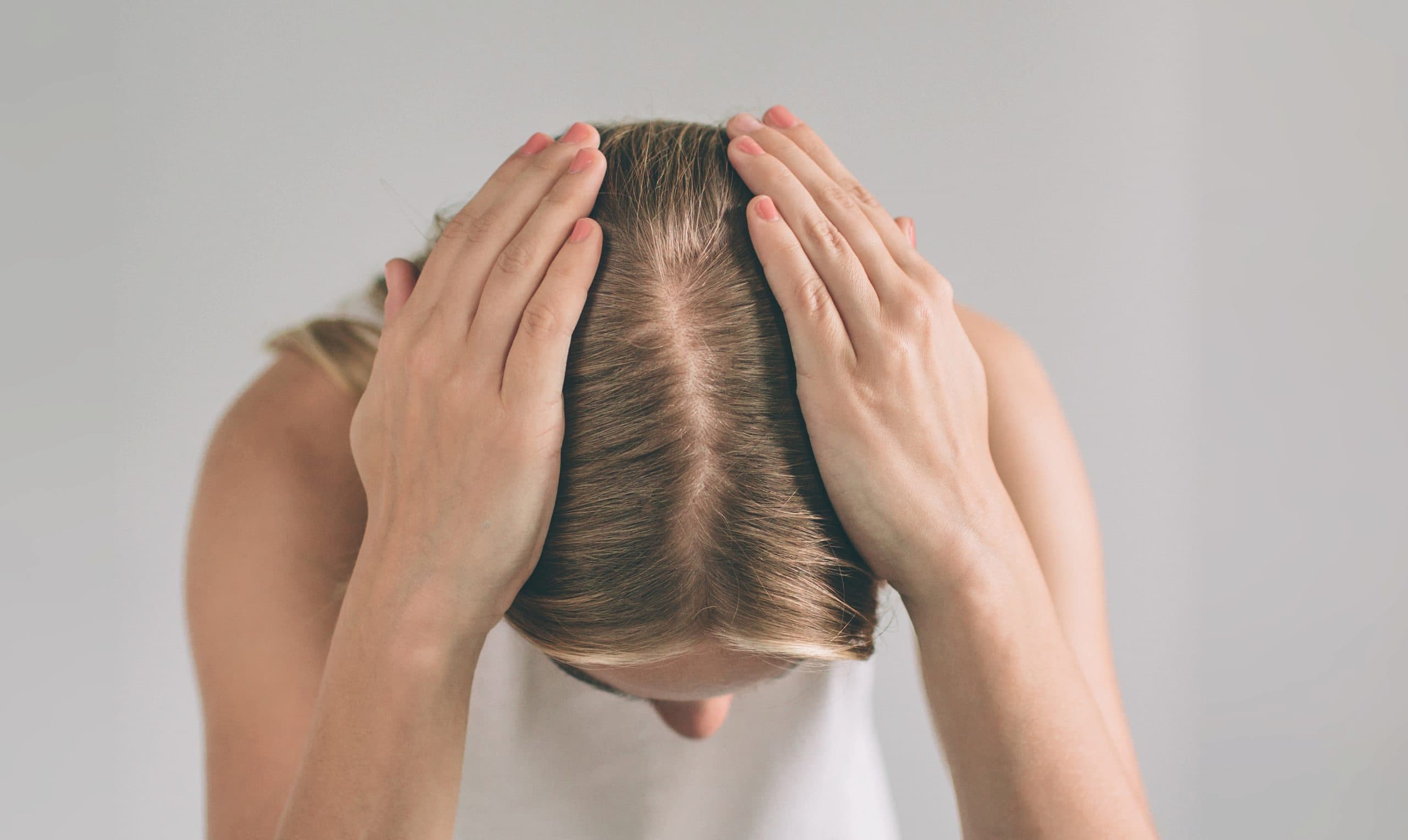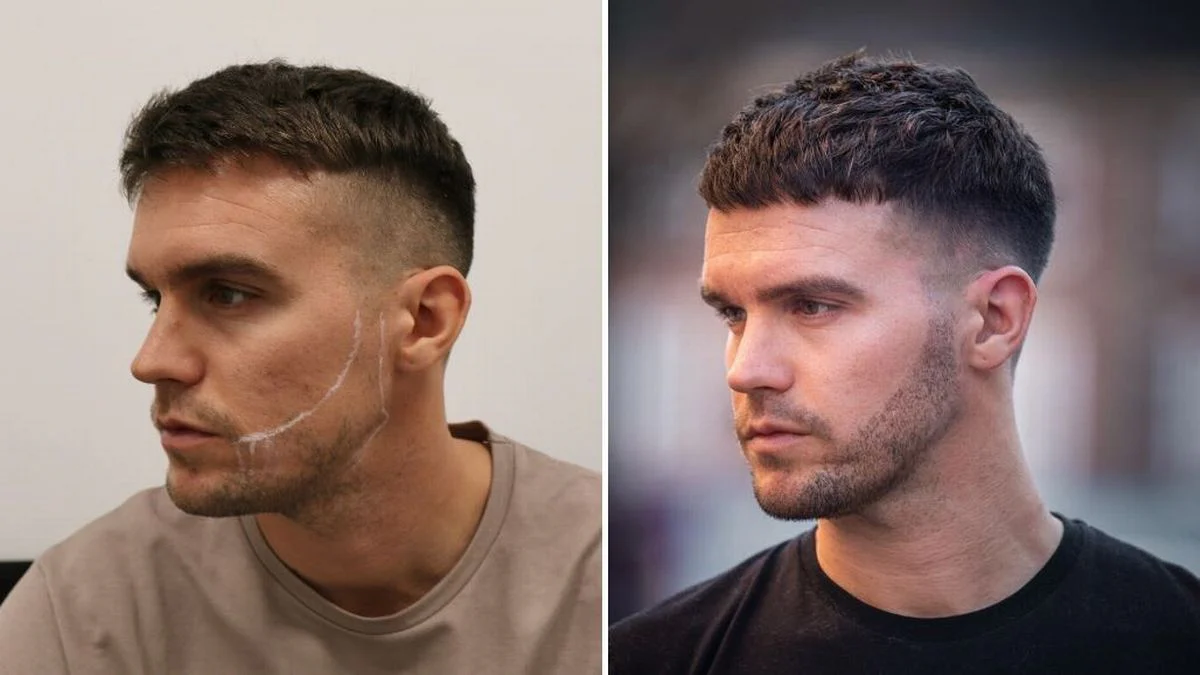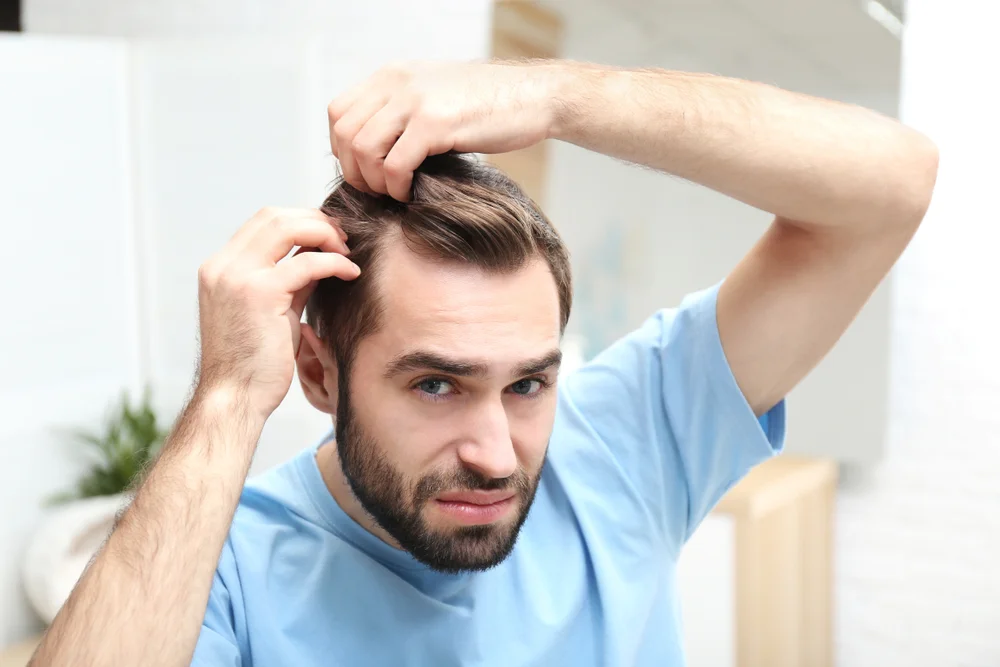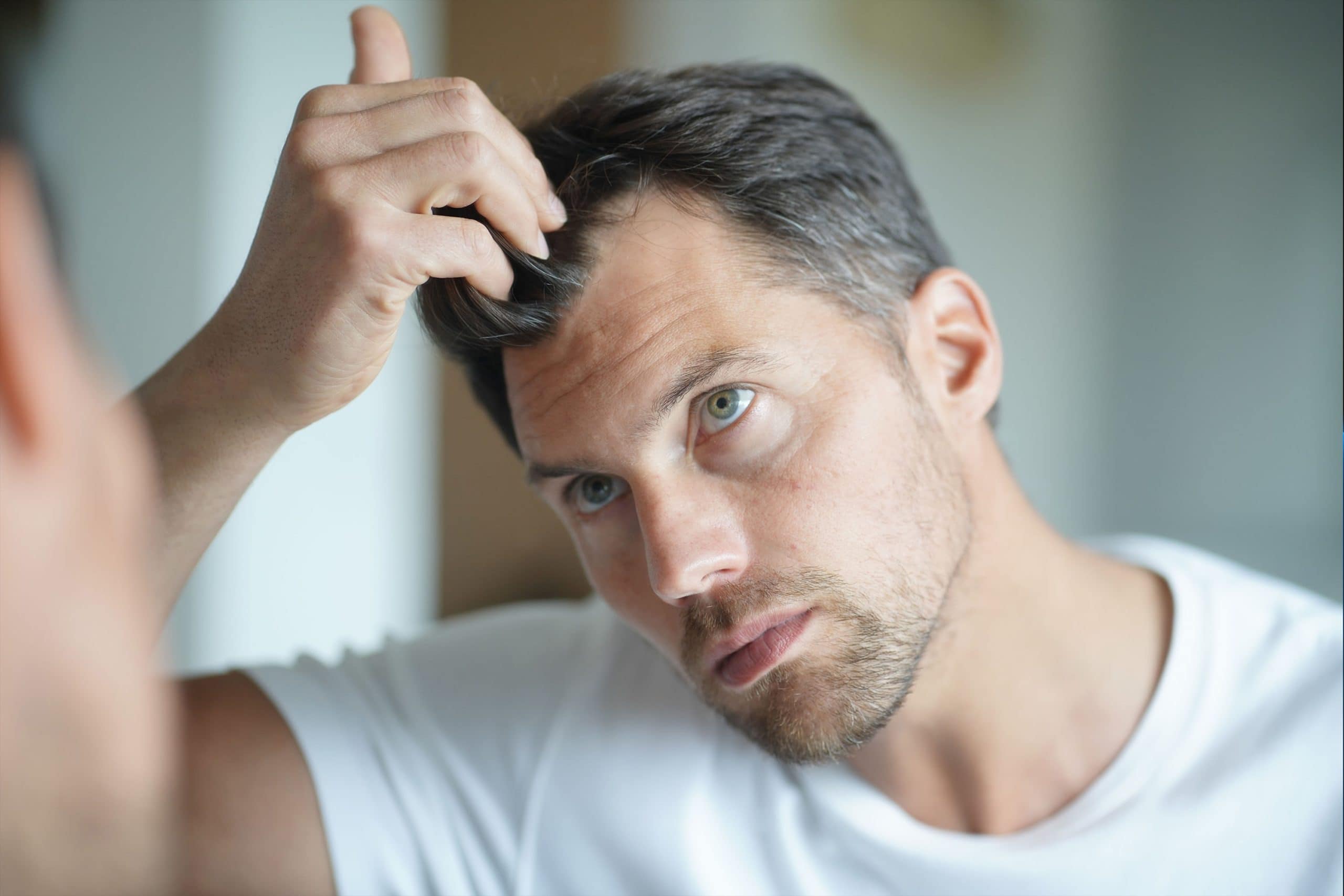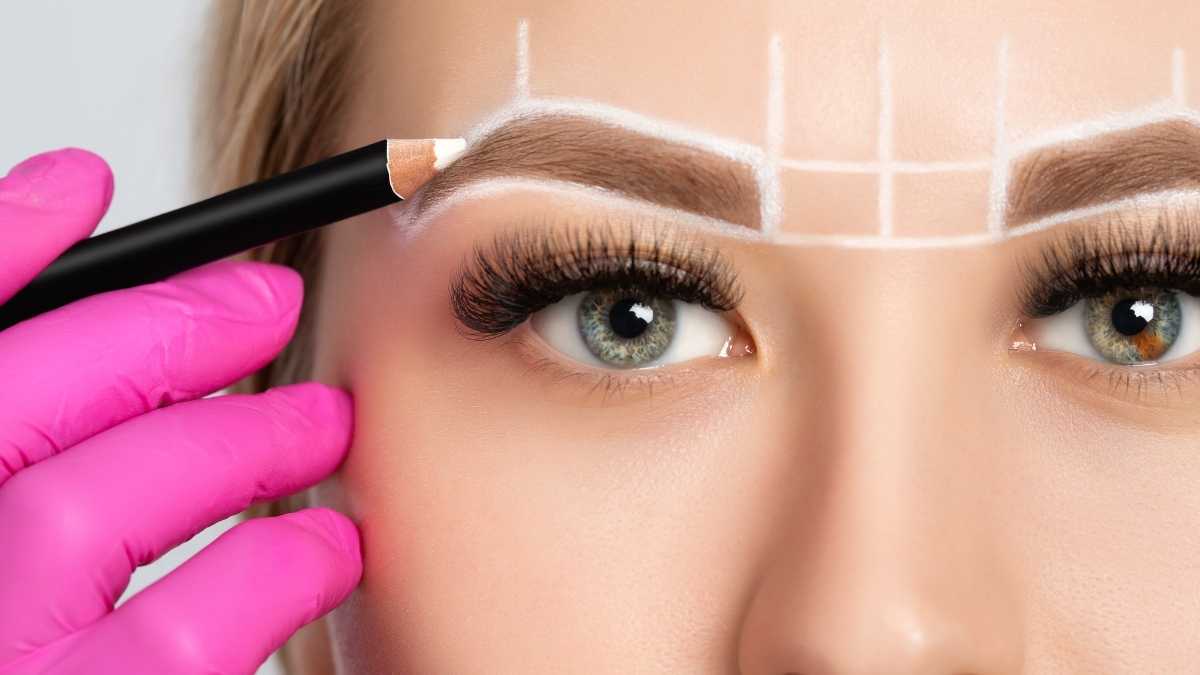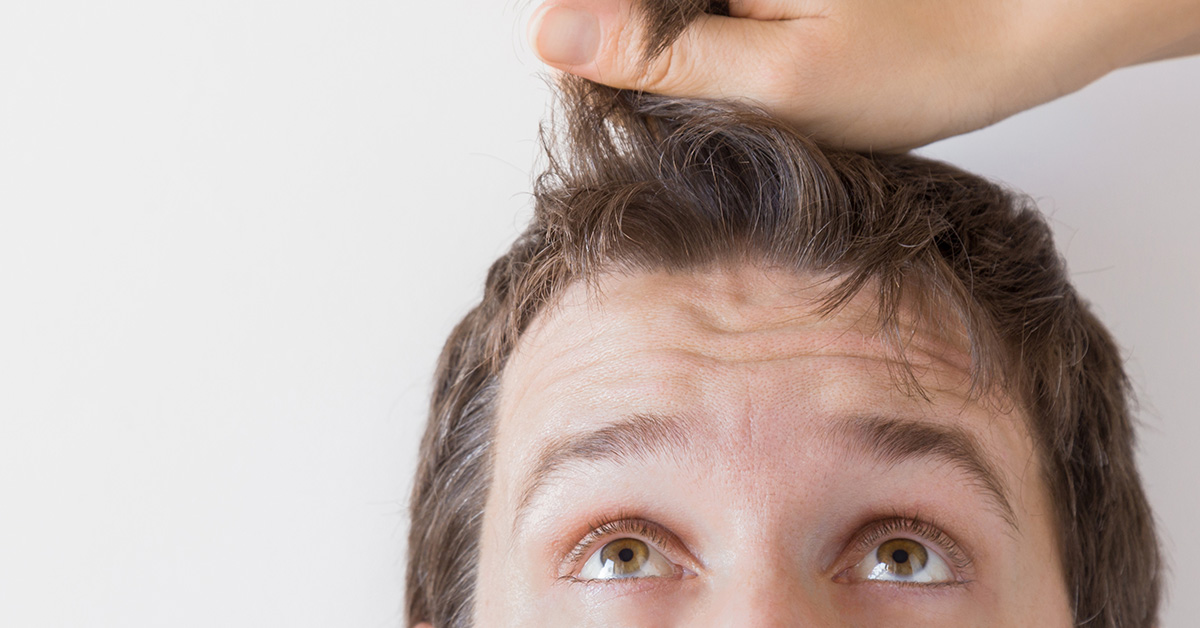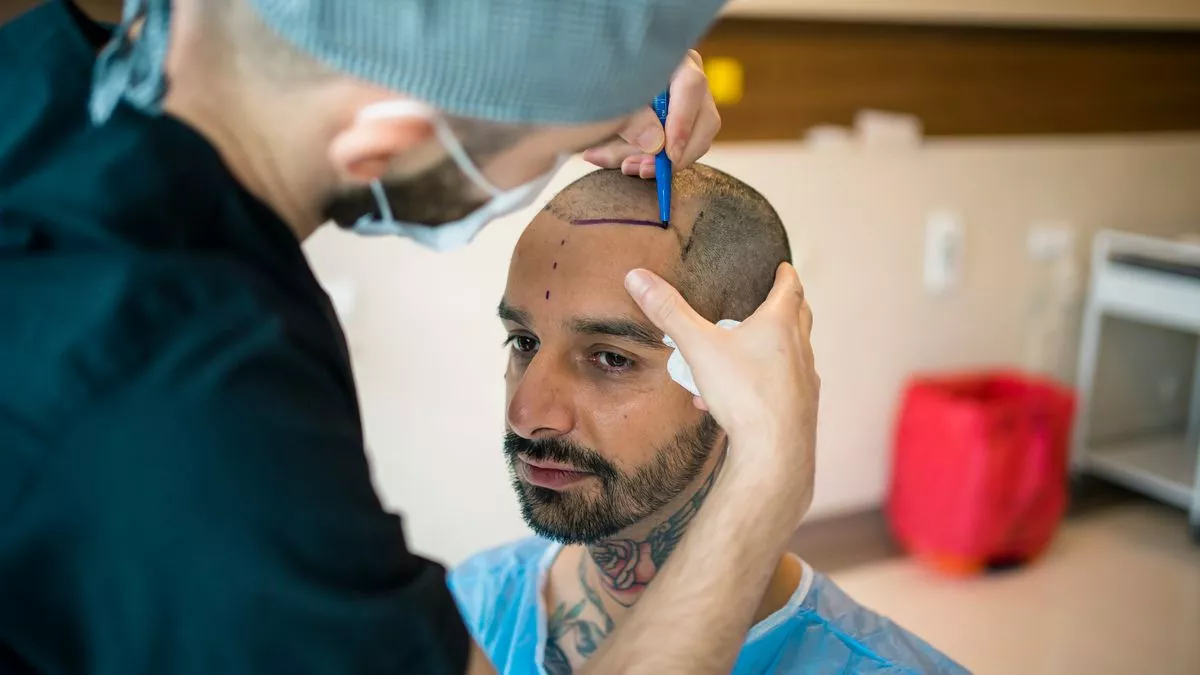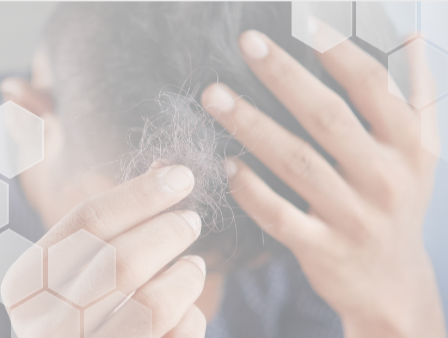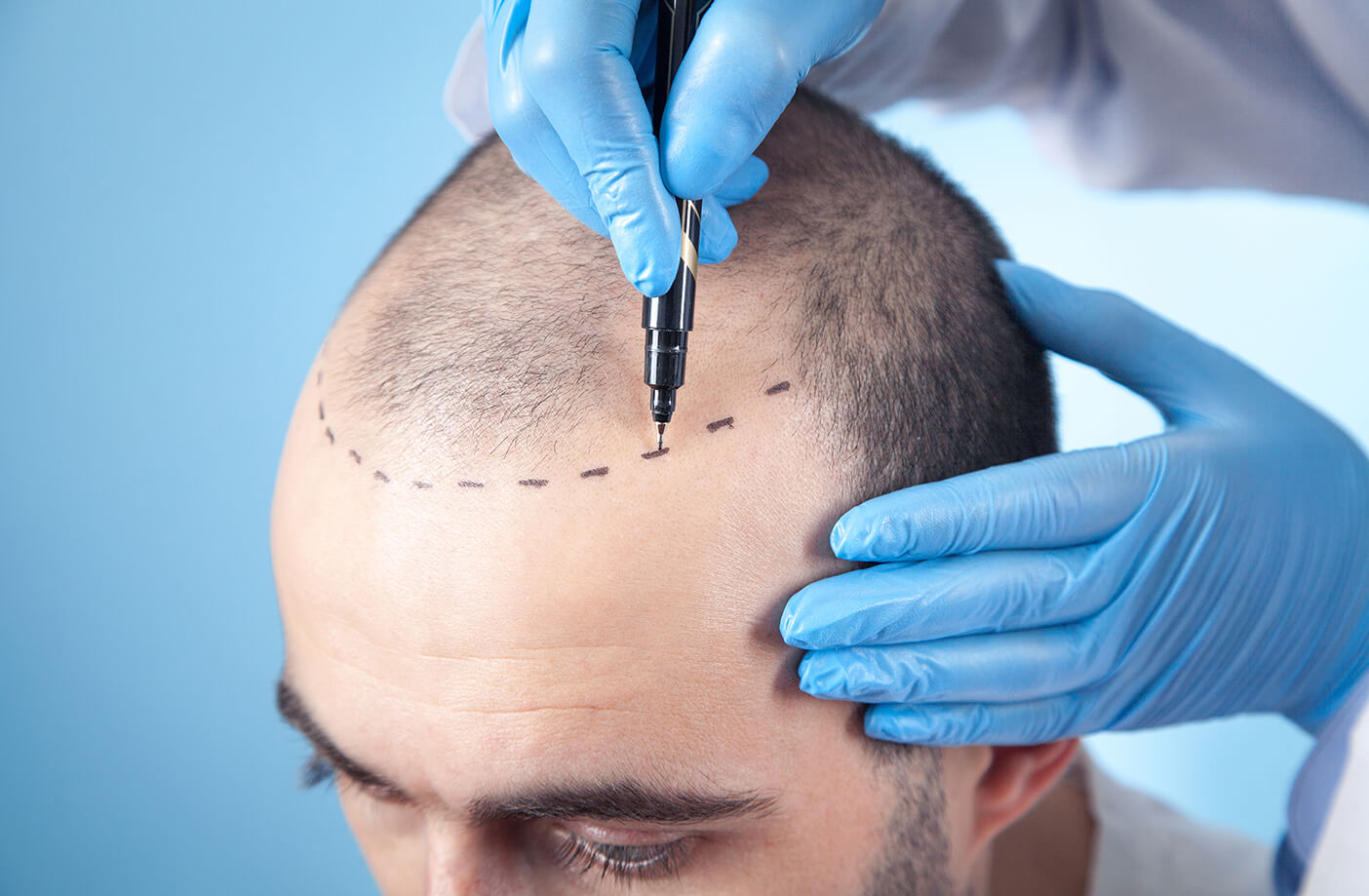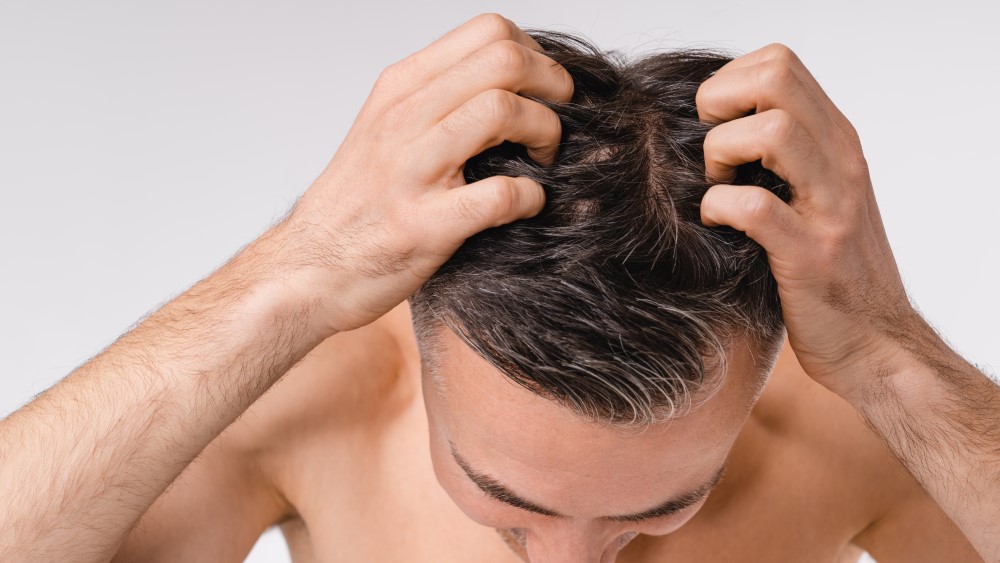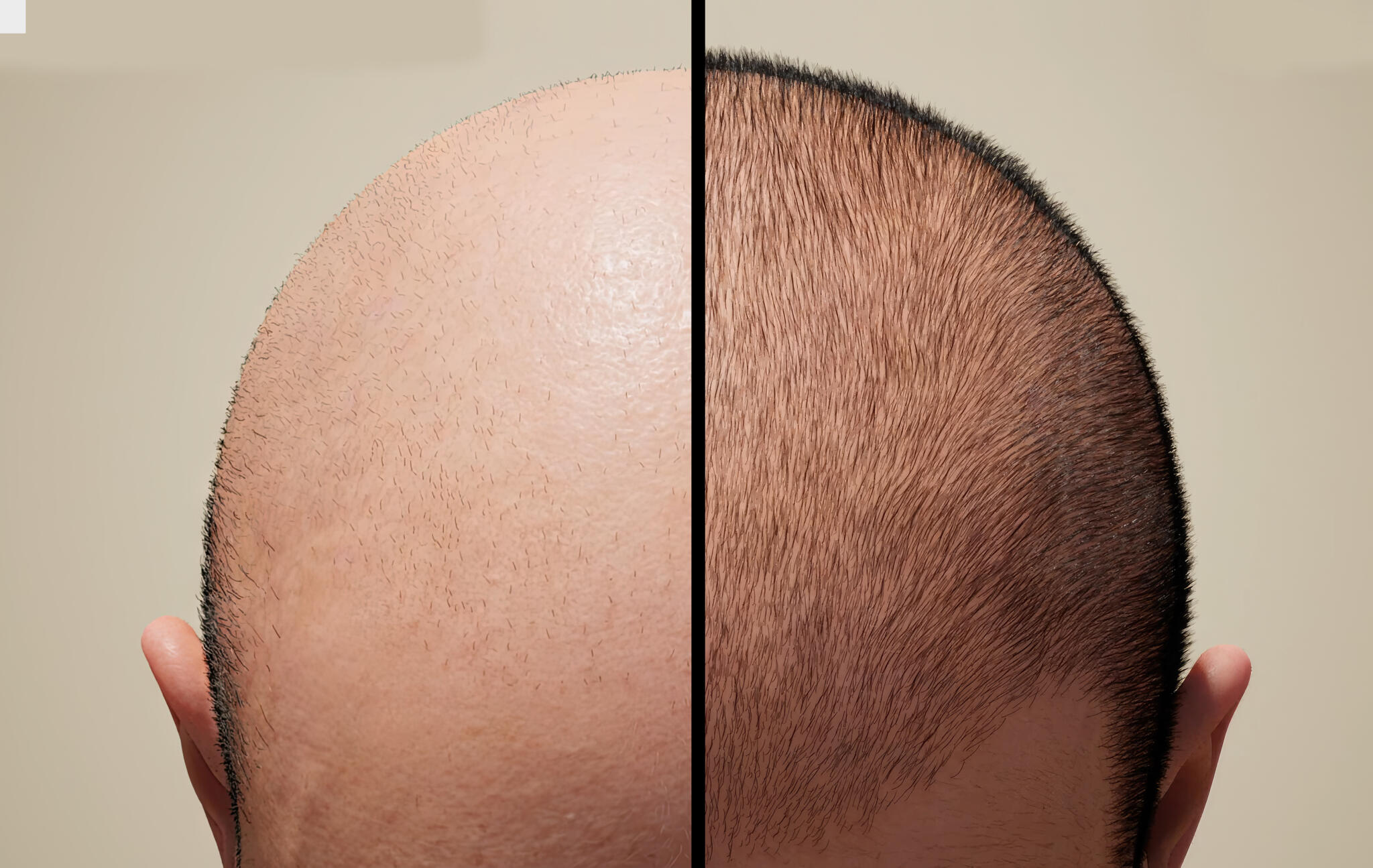Alopecia areata is a condition characterized by rapid and excessive hair loss. However, since the hair follicles remain alive, the process is reversible in most cases. With proper treatment, hair regrowth occurs over time in the majority of patients. In fact, nearly half of those affected experience hair regrowth within a year, although the condition often recurs more than once.
The disorder can affect both men and women of various ages, but the first episode most commonly occurs before the age of 30.
Causes of Alopecia Areata
Alopecia areata is considered an autoimmune disease, with genetic predisposition being the primary triggering factor. The pathological process may also be initiated by:
- Hormonal imbalance
- Frequent stress, anxiety, or depression
- A history of severe viral or other illnesses
- Body intoxication
- Long-term use of antibiotics or other medications
- Scalp trauma
Symptoms and Stages of Alopecia Areata
The hallmark of alopecia areata is localized hair loss, often in round or oval patches. It may also affect other body areas, including eyebrows, eyelashes, and body hair. Frequently, new hairs begin to grow in the bald spots but fall out again quickly. Without proper treatment, the disease may progress for years and lead to significant baldness.
Key symptoms include:
- Sudden and severe hair loss, especially noticeable during brushing when clumps of hair remain on the brush
- Temporary regrowth followed by renewed hair loss in affected areas
- Well-defined bald patches
- Gradual expansion of bald areas with intermittent flare-ups and remissions
Stages of alopecia areata:
- Progressive stage: Active hair loss with expanding bald spots. The skin in these areas may appear slightly swollen or reddish.
- Stabilization stage: Hair loss stops, no new bald patches appear, and existing bald areas remain unchanged with smooth, natural-colored skin.
- Regrowth stage: Hair begins to regrow as fine, colorless fuzz, which thickens and darkens over time. In some cases, hair may not return completely or may regrow with a different color.
Each stage varies in duration and severity depending on the individual and disease progression.
Types of Alopecia Areata
Several clinical forms of alopecia areata are recognized:
- Total alopecia: Often occurs during adolescence and is marked by rapid expansion of bald spots that merge over time. Without treatment, complete baldness may occur within 48 hours to several months.
- Subtotal alopecia: A slower-progressing form affecting up to half of the scalp. Hair becomes thin, discolored, and falls out with minimal traction. It may also affect eyebrows and eyelashes.
- Marginal alopecia: Hair loss occurs along the edges of the scalp, mainly at the temples and nape. Fine hair may temporarily remain but eventually falls out.
- Trichotillomania-like alopecia: Seen in patients with psychological disorders, hair breaks off 1–1.5 cm from the scalp in the frontal and parietal zones. The condition may regress on its own in a few weeks.
- Universal alopecia: A rare form involving total body hair loss. It may include nail deformities and be accompanied by neurovegetative symptoms like anxiety and vascular dystonia.
Diagnosis
To diagnose alopecia areata, a dermatologist or trichologist performs a detailed examination of the affected areas. A mechanical pull test is used—hairs easily detach even with slight traction. To identify the underlying cause and guide treatment, the following tests may be recommended:
- Blood tests
- Hair microscopy (to rule out fungal infection)
- Scalp biopsy (to exclude lupus, lichen planus, or sarcoidosis)
- Hair spectral analysis (to assess micronutrient levels)
Treatment of Alopecia Areata
Treatment must be comprehensive, targeting both the cause and hair regrowth.
Pharmacological treatments may include:
- Corticosteroids: Applied topically, injected, or taken orally to suppress immune response and reduce inflammation
- Immunomodulators: Help regulate immune activity and reduce follicular attacks
- Hair growth stimulants: Used to activate hair follicles
Additional therapeutic procedures may include:
- Laser therapy: Low-level lasers stimulate hair growth and improve scalp circulation
- Platelet-rich plasma (PRP) therapy: Injections of platelet-rich plasma derived from the patient’s blood stimulate follicular recovery
- Mesotherapy: Injection of vitamin cocktails and other active substances into the scalp to nourish hair follicles
In severe cases, psychological support may be necessary, as stress is a frequent trigger. Relaxation techniques like yoga, meditation, and breathing exercises may reduce emotional stress and improve overall well-being.
Proper hair care is also important—dermatologists recommend gentle, non-irritating shampoos and avoiding aggressive procedures such as frequent coloring or heat styling.
A comprehensive approach combining medical, physical, and psychological therapies offers the best chance of success in treating alopecia areata.
Prognosis
The effectiveness and speed of treatment depend on early diagnosis and strict adherence to medical recommendations. Starting therapy in the early stages greatly increases the likelihood of full hair regrowth within 12–24 months.
The worst prognosis is associated with total alopecia, where hair follicles are damaged. In such cases, hair transplantation may be the only viable option.
Prevention of Hair Loss
Although the exact causes of alopecia areata remain unclear and the disease is difficult to predict or prevent, certain steps may reduce the risk of recurrence and promote healthy hair and scalp:
- Reduce stress: Practice relaxation techniques and get enough rest to avoid emotional exhaustion
- Maintain a balanced diet: Eat foods rich in vitamins and minerals (zinc, B vitamins, biotin, iron) essential for hair health
- Gentle hair care: Use mild products free of harsh chemicals; avoid excessive heat and frequent dyeing
- Stay physically active: Regular exercise improves circulation and supports immune health
- Routine check-ups: If you’re at risk or have a family history of alopecia, visit a dermatologist or trichologist regularly
If you notice excessive hair loss or bald patches, don’t wait—schedule a consultation with a specialist at our clinic. We use state-of-the-art diagnostic tools and the latest treatment methods to achieve optimal results. Call us or fill out the online form on our website.


